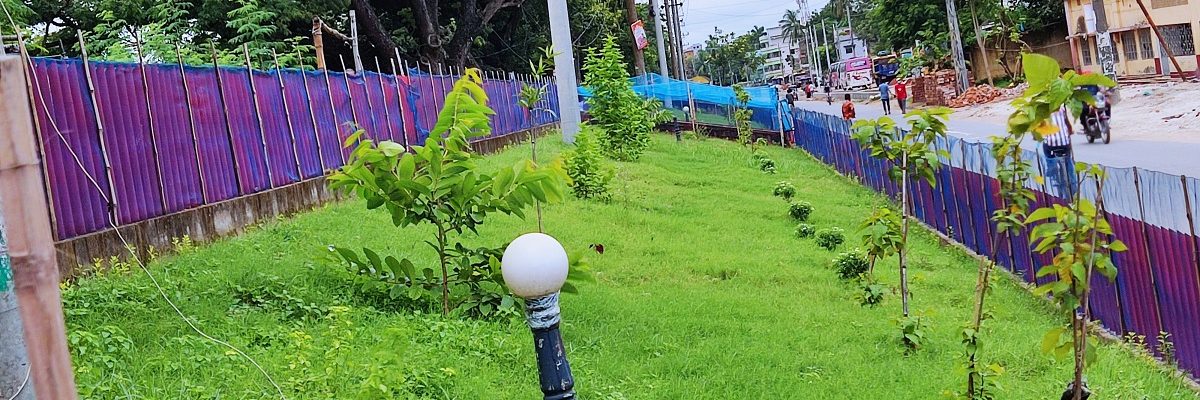Urban-LEDS II in Rajshahi & Narayanganj: Leading the way for Climate-Resilient Development in Bangladesh

Bangladesh has one of the world’s highest urban population growth rates. The country is also exceptionally vulnerable to climate change. It is, therefore, critical for Bangladesh’s cities to become climate-resilient and liveable in order to tackle these two major challenges, and for their sustainable development in the future.
There is growing awareness that cities will have a central role to play in the achievement of a country’s climate and sustainability targets. In line with Bangladesh’s national priorities, Rajshahi and Narayanganj, the two-model cities under the Urban-LEDS II project, have been working towards low-emission and climate-resilient development to cut GHG emissions and reduce their vulnerabilities to climate change.
As part of the project, Rajshahi and Narayanganj became pioneering cities in the country by developing their ‘first’ Climate Resilient City Action Plans or CRCAPs, which are guiding frameworks to appropriately steer them towards a low-carbon urban development pathway and to strengthen climate resilience.
The CRCAPs list several ‘structural’ and ‘enabling’ strategies spread across key urban sectors, which provide a pathway for both cities to enhance their adaptation and mitigation strategies. These identified strategies will not only help reduce GHG emissions and better manage local climate risks but will also support the cities in their Sustainable Development Goal (SDG) aspirations.
Rajshahi and Narayanganj worked on their GHG Emissions Inventories (base year 2017-18 and 2018-2019, respectively) and climate risk vulnerability assessment, with support from ICLEI South Asia. These assessments, along with the continuous involvement of and consultations with the cities’ Core Climate Committees, became the bedrock for the preparation of contextual and inclusive climate action plans.
While developing the action plans, both cities also worked on conceptualising and implementing several innovative pilot projects that addressed key urban and climate challenges, helped to advance the technical capacity of the municipal staff, and increased public awareness.
In Narayanganj, three stationary sensor-based AAQMS with communication modules and data logging systems have been set up to help the Narayanganj City Corporation (NCC) monitor air quality data in real-time at different locations in the city. An LED display board has been installed near the NCC main administrative building to share air quality information and generate public awareness. NCC, with support from ICLEI South Asia, has also installed 11.76 kWp capacity rooftop solar PV systems on two public buildings. One is a public library, on which a grid-tied rooftop solar PV system with net-metering capability has been installed. The second building is a healthcare centre at Bandar, on which a hybrid rooftop solar PV system with Lithium-ion batteries and net metering has been installed to help provide backup to critical loads.
Case Study – Installation of ambient air quality monitoring
The Core Climate Committees of Narayanganj and Rajshahi had identified air quality and renewable energy deployment as the priority areas for pilot implementation. At the same time, Rajshahi also wanted to focus its efforts on urban greening and biodiversity improvement. Supported by the Urban-LEDS II project, the Rajshahi City Corporation (RCC) undertook several interconnected activities to improve and better manage its open green spaces and create awareness among the citizens about its biodiversity.
Case Study: Urban Greening and Biodiversity Enhancement, Rajshahi, Bangladesh
The city has developed a Natural Asset Map and has prepared GIS-based treemaps for selected locations to represent the spatial distribution of tree species in the city. Nearly 1800 trees at various locations have been labelled to improve public awareness and promote conservation. Finally, as a demonstration project, more than 1000 saplings of local and naturalised plant species have been planted along 32 targeted slopes of Rajshahi’s Kolpona-Talaimari river embankment.
To demonstrate the potential of and to advocate energy efficiency, Rajshahi has implemented a pilot project on undertaking a detailed energy audit and energy improvement measures in the main office building of the RCC. The priority recommendations that were implemented were the installation of LED lamps in place of fluorescent tube lamps in rooms, corridors, and the lobby; installation of energy-efficient fans in rooms; application of low-emissivity film on windows on the eastern and western facades to optimise solar heat; and installation of occupancy sensors for select lighting circuits.
The leadership is shown by Rajshahi and Narayanganj to identify and evaluate their climate vulnerabilities and drivers of GHG emissions and to undertake evidence-based climate action planning and pilot implementation, paves the way for other cities in Bangladesh to replicate these efforts and contribute to the achievement of the country’s Nationally Determined Contributions and SDG targets.


